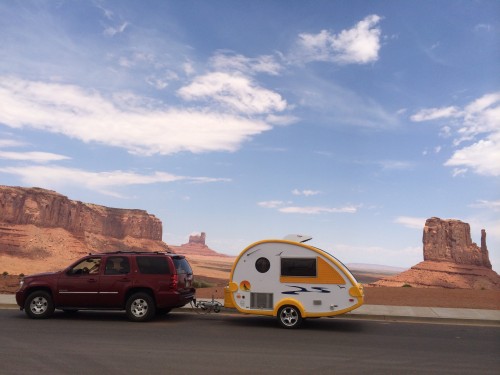Heading out on a road trip this summer?
You might stay entertained on the highway playing Punch Buggy, a game in which passengers slug each other in the shoulder whenever a Volkswagen Beetle goes by.
But to learn something about trends in the economy while out on the highway, watch for a different type of vehicle.
“I’m starting to see a lot more RV products on the road. And it’s not just because it’s summer,” said Kathryn Thompson, CEO of Nashville, Tennessee-based Thompson Research Group.
“An RV is as discretionary a purchase as you can think of,” she said. “So if someone is buying an RV, something must be working.”
According to Thompson, sales of recreational vehicles in the United States hit a low point during the recession, bottoming out in the spring of 2009 with the bankruptcy of two large motor home manufacturers—Fleetwood Enterprises and Monaco Coach.
Yet these days, RV sales have improved along with the economy. Lower priced towables and trailers, with price tags that can start at around $10,000, led the recovery. Sales of the more expensive motorized RVs, including motor homes that can have price tags well over $500,000, caught up later.
“In North America sales were was running over 300,000 units a year until 2008,” said Tom Walworth, president of Statistical Surveys in Grand Rapids, Michigan. “In 2009, sales dropped to 206,000 units. By 2013, they went back to 303,000 units. So in four years it came back 47 percent from the bottom, which is very impressive as an economic indicator,” Walworth said.
During that time, sales of towable RVs (including folding trailers, truck campers and travel trailers) rose 46.4 percent, while sales of the more expensive motorized motorhomes (categorized as Class A, B or C) gained 51 percent from the 2009 low.
This year, shipments of new RVs to dealers will total 349,400 units, an 8.8 percent over 2013, said RV analyst Richard Curtin, director of the Consumer Research Center at the University of Michigan. In 2015, he expects shipments to rise another 3.1 percent.
Who’s buying all these RVs?
“Boomers are the largest demographic of RV owners,” said Mac Bryan, vice president of administration at the Recreational Vehicle Industry Association. “But those age 35-54, the younger consumers who want to be active and outdoors, are the fastest-growing demographic.”
And when friends and family members go along on RV trips, or just hear about them, “that introduces even more people to the RV lifestyle,” Bryan said.
“We have an increasing number of friends and acquaintances ‘of a certain age’ who have chosen the RV lifestyle full or part-time,” said Richard Eiswerth, president and general manager of a Cincinnati public radio station who is in his early 60s. “If and when I retire, who knows?”
Longtime tent campers, Eiswerth and his wife, Susan, last May dipped their toes in the RV ownership market with a small, retro-style, teardrop trailer they bought in Wisconsin before heading west for a trip to Devil’s Tower, Yellowstone and the Grand Tetons.
The couple has large dogs, so they also bought an attachable add-on tent to cover the crates the dogs sleep in at night.
“We didn’t want to simply have another, more expensive, version of home on wheels with all the frills and luxuries of our actual home. We wanted to be able to travel to and camp in a variety of locales, not just asphalt RV compounds,” Eiswerth said.
He lists the advantages of the small camper as better gas mileage than a larger RV, ease of maneuverability, speed and convenience of set-up and tear-down and heat and air conditioning, when necessary.
And best of all, he said, “Much like a tent, this has a connection to the outdoors.”
(My story on recreational vehicles sales increasing first appeared on CNBC Road Warrior).
